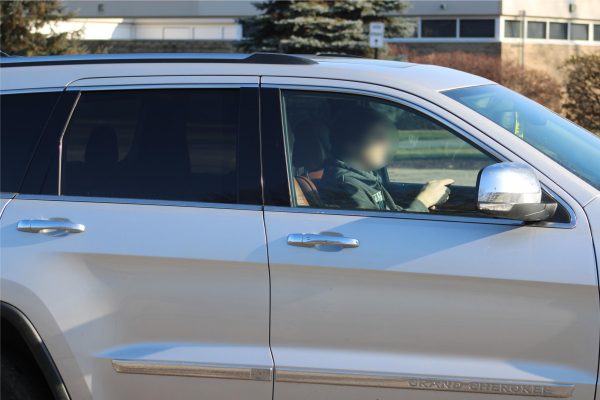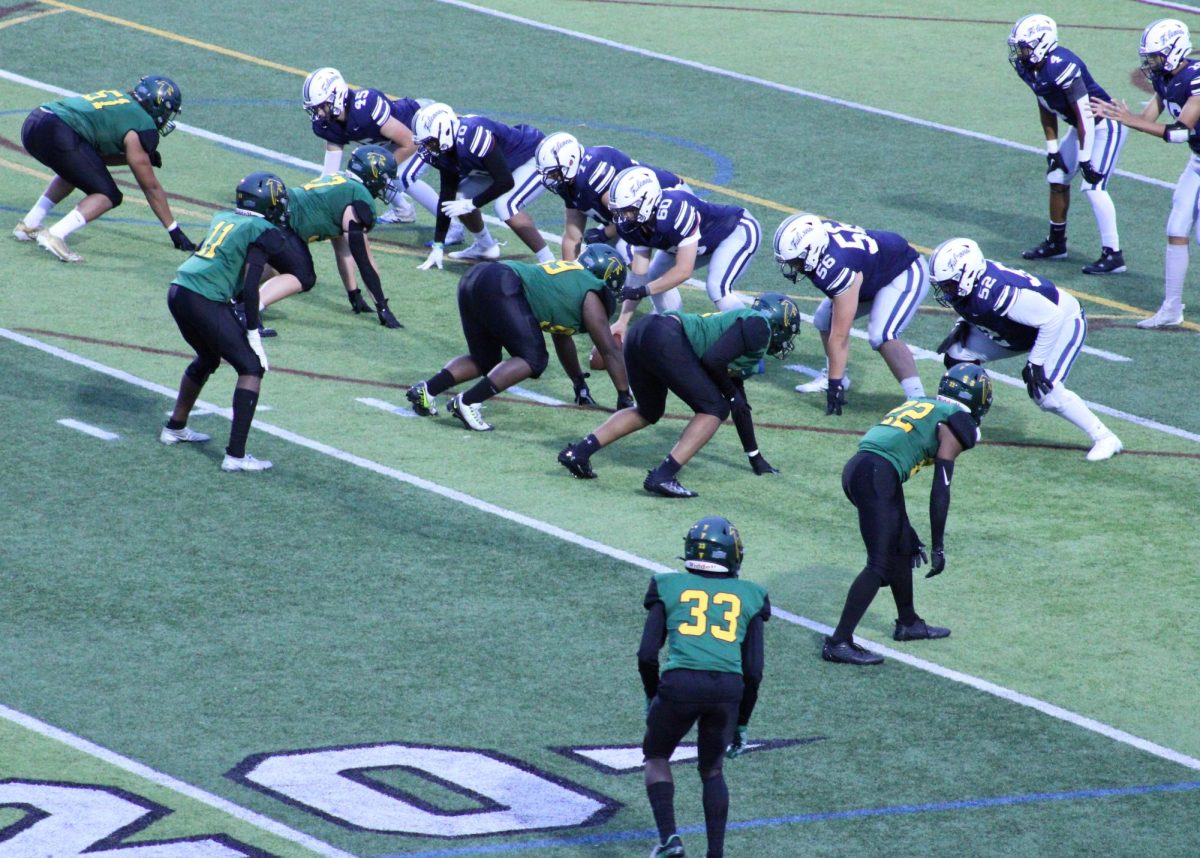When it comes to danger, many people think of sharks and saws. Here at the Scriptor, we think of the Groves student parking lot. From speeding through the lot to parking in nonexistent spots, the inexperience of Groves’ student drivers is a big problem.
Unfortunately, to many student drivers, the parking lot is notoriously difficult to navigate. Though the age and experience of drivers plays a significant role, the physical conditions of the parking lot exasperate the danger.
“There’s a lot of potholes,” Nichole Kaizen Mangoba, a student driver at Groves, said. “They need to fix those things as quickly as they can. Just—please! Take the time.” Mangoba echoes a frequent concern among Groves students, the physical insecurities littering the parking lot are a safety hazard to all traffic. Parking lots are one of the most vulnerable forms of infrastructure.
“The lifespan of a parking lot depends on several factors. These include damages and repairs to the concrete, climate, frequency of use, and your dedication to routine care,” wrote K & E, the largest concrete contractor in Kansas. Parking lots with heavy traffic are the most vulnerable to damage and decay, and the Groves parking lot is no exception.
In combination with deteriorating materials, the layout and orientation leaves both students and parents confused. The lines around the parking lot, traditionally used to help navigation, are faded or simply not visible. The lack of lines is especially dangerous to those who aren’t familiar with the ins and outs of the parking lot, such as the people who drop off their students.
Parent drivers are another factor that affects the flow of traffic. There is a significant amount of parents that pick up their children (especially freshmen and sophomores) from the school’s main parking lot. Due to limited space and limited exits, parents default to large parking spaces— the same parking spaces that student drivers are required to use.

“People were kind of stopping [in the parking lot and] letting their kids out, which is backing up traffic onto 13 Mile [Road],” Groves Vice Principal Othamian Peterson said.
Overall, the physical conditions of the parking lot, are an inconvenience and hazard to many student drivers at Groves. However, Physical obstacles are just the tip—inexperienced drivers are the rest of the iceberg, hidden beneath the surface. Unsafe conditions like these might be navigable for experienced drivers, but Groves’ lot is full of new operators. Younger drivers get into more accidents than any other age demographic due to lack of experience. This strikes an issue, considering over half of Groves’ lots consist of people with fewer than three years of driving experience.
“They’re doing what teenagers do— unfortunately— which is to take risks, to not be cautious, to not heed the warnings, to not pay attention, and to not follow the instructions,” Peterson said. “But there will always be an opportunity to get better.”
Foreign language teacher Jaclyn Arslanian believes that student drivers have the opportunity to improve—by being as careful as teachers. “I think we’re much more cautious. Especially considering we know that it’s really early in the morning when we arrive… We’re trying to be more cautious for ourselves and for other people,” Arslanian said.
Both Peterson and Arslanian recognized the perilous phenomenon of peer pressure. Peer pressure has a stronger influence on decision-making. At Groves, upperclassmen are allowed to leave campus during their lunch periods. This was designed to provide students with autonomy and responsibility. Students, however, may fail to live up to the expectations.
“Some of the concerns… [were] exiting the parking lot, student traffic, students cutting off other students, high rates of speed, reckless moves, things like that,” Peterson said, highlighting some of his biggest concerns around student driving. There is a clear correlation between lunch periods and reckless driving that inevitably increases the risk level of driving in the parking lot.
The danger of the parking lot is not exaggerated by any sense of the word. Students who attend Groves are unfortunately familiar with car crashes, accidents and safety concerns.
“I feel pressured by [other cars]… like to not let people in, which seems mean. The other day I let someone in and someone honked at me because they wanted me to move so they could leave,” senior Caroline Sexton said, explaining how she personally felt the need to change to fit the demands of other drivers.
Small situations like Sexton’s might seem harmless at face value, but instances like these can quickly escalate.

“There are several times where I’ve almost hit someone because they’re… trying to be quick, trying to get out of the parking lot,” Mangoba said, waving her hands around in an exasperated manner. One wrong turn or missed signal could be fatal.
However, student drivers are used to this type of anxiety. Many go out of their way to plan their days around when they park to avoid dangerous or inconvenient situations.
“[I] usually get to school pretty early, and that’s because I don’t want to try and find a parking spot, because I know it gets busy,” Mangoba said, once again expressing her constant struggle with parking.
There is a clear documented pattern of danger and safety risks among students and parents. Students’ state of mind and experience plays a large role. In combination with these psychological factors, the vehicles fluctuating in and out of the parking lot contributes to feelings of peer pressure and anxiety.
Despite the inherent flaws plaguing the parking lot, staff and students are optimistic that with a shift in procedure, it can be improved.
“I feel like there should be some sort of guard mitigating—catching students speeding; not paying attention,” Mangoba suggests. According to a 2015 BMC Public Health article, traffic guards are a simple way to reduce speeding and raise conscientiousness in local traffic. The notion of a traffic guard doesn’t necessarily require a new hire—it could instead be creating a new caveat for current security guards at Groves.
School security guard Bob Stanton agrees with the idea of enhanced security. He also thinks that reinforcing consequences would provide a chance for “rehabilitation.” Citations for reckless driving could result in students eventually retesting for their license.
“We could also ticket the cars that are parked without [passes]—or the school could, if they wanted, have [them] towed,” Stanton said. Stanton’s solutions may seem severe, but he’s on the right track. According to The Traffic Safety Store, the nation’s largest distributor of construction goods, well-managed lots reduce liability costs and increase safety for everyone at the school. Stanton came up with these solutions because he cares about the wellbeing of the students at Groves, as does Peterson: he encourages students to police themselves while being kind to each other.
The Groves student parking lot is riddled with inexperienced drivers. Whether or not students refine their driving is up to them— but maybe, with the implementation of enhanced security and reinforced consequences for reckless driving, our lot will become as safe as can be.






































